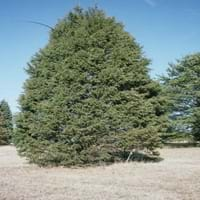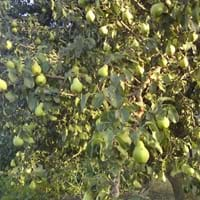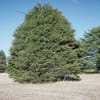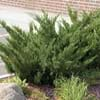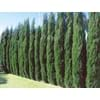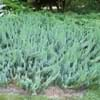Life Span
Perennial
Perennial
Type
Needled or Scaled Evergreen
Perennial
Origin
Southwestern United States
Hybrid origin
Types
Bhutan cypress, Tonkin cypress, Vietnamese cypress
Not Available
Habitat
Woodland Garden Canopy
Hedge, hedge rows, Woodland edges
USDA Hardiness Zone
6-9
4-9
Sunset Zone
7, 8, 9, 10, 11, 12, 13, 14, 15, 16, 17, 18, 19, 20, 21, 22, 23, 24
Not Available
Habit
Pyramidal
Upright/Erect
Flower Color
Yellow
White
Flower Color Modifier
Bicolor
Not Available
Fruit Color
Brown
Light Red, Orange, Yellow
Leaf Color in Spring
Green, Gray Green
Green
Leaf Color in Summer
Green, Gray Green
Green
Leaf Color in Fall
Green, Gray Green
Green
Leaf Color in Winter
Green, Gray Green
Light Green
Leaf Shape
Fern like
Elliptic
Plant Season
Spring, Summer, Fall, Winter
Spring, Summer
Sunlight
Full Sun, Partial Sun
Full Sun, Partial Sun
Growth Rate
Medium
Medium
Type of Soil
Loam, Sand
Loam, Sand
The pH of Soil
Acidic, Neutral
Acidic, Neutral
Soil Drainage
Well drained
Well drained
Bloom Time
Not Available
Spring
Repeat Bloomer
No
Not Available
Tolerances
Drought
Drought
Where to Plant?
Ground
Ground
How to Plant?
Seedlings
Seedlings
Plant Maintenance
Medium
Medium
Watering Requirements
Drought Tolerant
Average Water Needs, Do not water frequently
In Summer
Lots of watering
Lots of watering
In Spring
Moderate
Moderate
In Winter
Average Water
Average Water
Soil pH
Acidic, Neutral
Acidic, Neutral
Soil Type
Loam, Sand
Loam, Sand
Soil Drainage Capacity
Well drained
Well drained
Sun Exposure
Full Sun, Partial Sun
Full Sun, Partial Sun
Pruning
Remove damaged leaves, Remove dead branches, Remove dead leaves, Remove dead or diseased plant parts, Remove deadheads
Remove damaged leaves, Remove dead branches, Remove dead leaves
Fertilizers
All-Purpose Liquid Fertilizer
All-Purpose Liquid Fertilizer
Pests and Diseases
Red blotch
Red blotch
Plant Tolerance
Drought
Drought
Flower Petal Number
Single
Single
Fragrant Bark/Stem
Yes
No
Foliage Texture
Fine
Medium
Foliage Sheen
Matte
Glossy
Attracts
Wildlife
Not Available
Allergy
allergic reaction, Avoid during Pregnancy
Not Available
Aesthetic Uses
Showy Purposes
Not Used For Aesthetic Purpose
Beauty Benefits
Good for skin
Not Available
Edible Uses
Insignificant
Yes
Environmental Uses
Air purification, soil stabilisation
Air purification
Medicinal Uses
Not Available
Astringent, Febrifuge
Part of Plant Used
Wood
Flowers, Stem
Other Uses
Used as fuel, Used for woodware
Planted in shelterbeds, Used for woodware
Used As Indoor Plant
Yes
No
Used As Outdoor Plant
Yes
Yes
Garden Design
Feature Plant, Mixed Border, Screening, Wind Break
Edible, Fruit / Fruit Tree
Botanical Name
CUPRESSUS arizonica
PYRUS 'Ayers'
Common Name
Arizona cypress
Ayers Pear, Pear
In Hindi
Arizona Cypress Tree
Ayers Pear
In German
Arizona Zypresse
Ayers Birne
In French
Arizona Cyprès
Ayers Poire
In Spanish
Ciprés de Arizona
Ayers pera
In Greek
Αριζόνα Κυπαρίσσι
Ayers Pear
In Portuguese
Árvore de Cypress Arizona
Ayers Pear
In Polish
Arizona Cypress Drzewo
Ayers Gruszka
In Latin
Cupressus arbor
Ayro Orbis
Phylum
Pinophyta
Tracheophyta
Class
Pinopsida
Magnoliopsida
Family
Cupressaceae
Rosaceae
Clade
Not Available
Angiosperms, Eudicots, Rosids
Tribe
Not Available
Not Available
Subfamily
Cupressoideae
Not Available
Number of Species
Not Available
Difference Between Arizona Cypress and Ayers Pear
If you are confused whether Arizona Cypress or Ayers Pear are same, here are some features about those plants to help you choose better. Many people think that these two plants have the same characteristics, but one can see Arizona Cypress and Ayers Pear Information and learn more about it. Fertilizers required for proper growth of Arizona Cypress are All-Purpose Liquid Fertilizer, whereas for Ayers Pear fertilizers required are All-Purpose Liquid Fertilizer. Hence, one should know the basic difference between Arizona Cypress and Ayers Pear if you are planning to have them in your garden to enhance its beauty.
<
Flowering PlantsImportance of Arizona Cypress and Ayers Pear
Want to have the most appropriate plant for your garden? You might want to know the importance of Arizona Cypress and Ayers Pear. Basically, these two plants vary in many aspects. Compare Arizona Cypress and Ayers Pear as they differ in many characteristics such as their life, care, benefits, facts, etc. Every gardener must at least have the slightest clue about the plants he wants to plant in his garden. Compare their benefits, which differ in many ways like facts and uses. The medicinal use of Arizona Cypress is Not Available whereas of Ayers Pear is Astringent and Febrifuge. Arizona Cypress has beauty benefits as follows: Good for skin while Ayers Pear has beauty benefits as follows: Good for skin.
Compare Facts of Arizona Cypress vs Ayers Pear
How to choose the best garden plant for your garden depending upon its facts? Here garden plant comparison will help you to solve this query. Compare the facts of Arizona Cypress vs Ayers Pear and know which one to choose. As garden plants have benefits and other uses, allergy is also a major drawback of plants for some people. Allergic reactions of Arizona Cypress are allergic reaction and Avoid during Pregnancy whereas of Ayers Pear have Not Available respectively. Having a fruit bearing plant in your garden can be a plus point of your garden. Arizona Cypress has no showy fruits and Ayers Pear has showy fruits. Also Arizona Cypress is not flowering and Ayers Pear is not flowering . You can compare Arizona Cypress and Ayers Pear facts and facts of other plants too.
